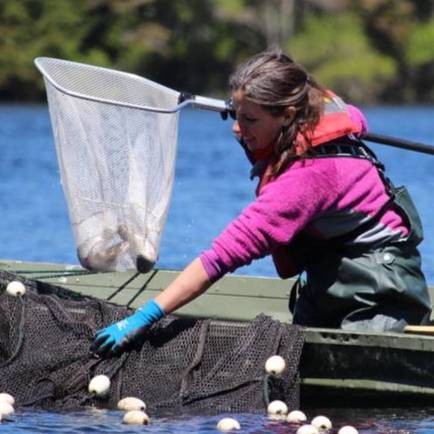Genetic Rescue is Underused for Endangered Species Recovery
During a recent review of the U.S. Fish and Wildlife Service’s recovery plans for more than 200 endangered and threatened vertebrate species in the United States, MSU researchers made an interesting discovery. They found that two-thirds of these species could benefit from a gene-boosting diversity strategy known as genetic rescue. Surprisingly, just three of these plans to support species recovery currently use this approach.
Genetic rescue is an increase in population size caused by the movement of new genetic material from one population to another. This can happen through either human-assisted intervention or natural migration. As a conservation tool, this strategy can increase the genetic diversity of small, isolated populations and help them recover from inbreeding.
“These small, isolated populations are becoming more frequent, fragmented and in trouble,” said Sarah Fitzpatrick, an associate professor in the Department of Integrative Biology and W.K. Kellogg Biological Station (KBS) faculty member. “They might benefit from some human-assisted migration to help infuse deteriorating populations with more genetic variation, which can help them respond to changes in the environment as well.”
Translocating, or the act of moving individuals from one place to another, is a common practice that has most often been used outside the context of genetic rescue.
“This is pretty common in fish management,” said Cinnamon Mittan-Moreau, an MSU Ecology, Evolution and Behavior (EEB) Presidential Postdoctoral Fellow based at KBS. "Managers have been moving animals and plants around for more than a century, just not with the intention of increasing genetic variation.”
The good news is that, in many cases, the logistics of carrying out these translocations have already been overcome, and so the time is ripe for more attempts at genetic rescue. Despite this, however, this strategy continues to be left out of species recovery plans.
“We found that more than two-thirds of the 222 species we evaluated would be good candidates for consideration of genetic rescue,” Sarah said. “And yet, we found only three examples of implementation of genetic rescue. As genomic resources become available for more species, we hope to see increased incorporation of genetic information in recovery planning, including informed translocation actions for the purpose of genetic rescue.”
Along with Fitzpatrick and Mittan-Moreau, co-authors on this study include postdoctoral researcher Jessica Judson and former laboratory manager Madison Miller.
“There’s a lot of opportunity for this to help, but we don’t see it very often,” Mittan-Moreau said. “No one had done this full review to see if this could be considered more often for endangered species plans.”
The paper was published in the Journal of Heredity.



